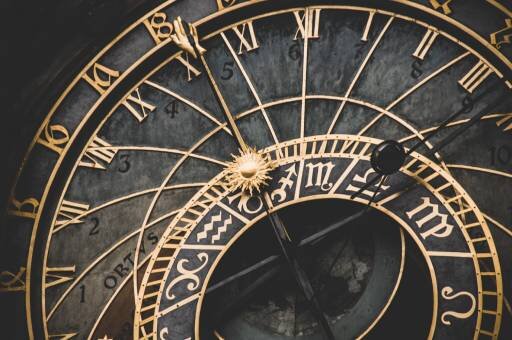By Karen A. Bellenir
Roman time-keeping device, Prague, Czech Republic (Photo by Fabrizio Verrecchia on Unsplash).
For many people, this weekend marks the beginning of Daylight Saving Time, when clocks “spring forward” one hour. The change officially takes place at 2:00 a.m. on March 8. At that hour clocks will be reset to read 3:00 a.m. When everyone makes the adjustment at the same time, schedules remain predictable.
For most of history, however, clocks were set using a different standard. Noon occurred when the sun reached its highest point. Because the earth spins continuously, the moment of this occurrence, solar noon, was a local phenomenon. Noon in Boston, for example, might occur nearly a half hour before noon in Washington, DC.
In Europe and in North America, the need for a standardized time-keeping method arose along with the railroad industry. U.S. railroads divided the continental stretch between the Atlantic and Pacific Oceans into four zones. In 1918, these were finalized and formally adopted as the time zones Americans know today. Around the globe, time zones add or subtract hours or fractions of hours from a conventional standard known as Coordinated Universal Time (abbreviated UTC), which is centered on the Prime Meridian, an historically important reference point running through Greenwich, England.
Earth’s time zones designate areas that each encompass approximately 15 degrees of longitude, although there are many adjustments to accommodate commercial, social, and geopolitical needs. By establishing a median standard within the zones, local solar noon often became displaced from noon on the clock. For example, on March 7, 2020, solar noon in Washington DC will occur a few seconds before 12:19 p.m. Eastern Standard Time. Switching to Daylight Saving Time increases the difference by an hour. On March 8, 2020, solar noon in Washington DC will occur a few seconds before 1:19 p.m. Eastern Daylight Time.
You can use the NOAA Solar Calculator, produced by the National Oceanic and Atmospheric Administration’s Earth System Research Laboratory, to determine the time of solar noon in your location.

